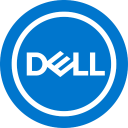IT Transformation is a concept that resonates with companies even more now than it did 12 months ago. It sounds like another current term, “digital transformation.” But in fact, effective digital transformation doesn’t happen without IT Transformation.
A company that undergoes IT infrastructure transformation no longer has to rely on rigid, manual, siloed, legacy technologies. It sees a boost in IT operational speed, efficiency, scale, and cost effectiveness—tasks are automated, processes streamlined, and resources are freed up. Those IT-level improvements fuel a larger-scale digital transformation, allowing the company to thrive in today’s digital economy. It is able to out-innovate, out-think, and out-pace its competitors—ultimately becoming the disruptor, not the disrupted.
It is possible to categorize a company’s degree of IT Transformation according to how extensively it has adopted:
Modernized data center technologies—e.g., modern data protection solutions, software-defined networking and storage, server virtualization, scale-out and converged/hyper-converged infrastructure and All-Flash storage.
- Automated IT processes—e.g., delivering IT as a service (ITaaS) in a cloud operating model for cost transparency, efficiency, and responsiveness, automating infrastructure configuration and provisioning, and enabling self-service capabilities to end-users.
• Transformed organizational dynamics—e.g., regularly inspecting IT outcomes for effectiveness, and making sure that the IT group has opportunities to contribute proactively to business-strategy decisions

































































